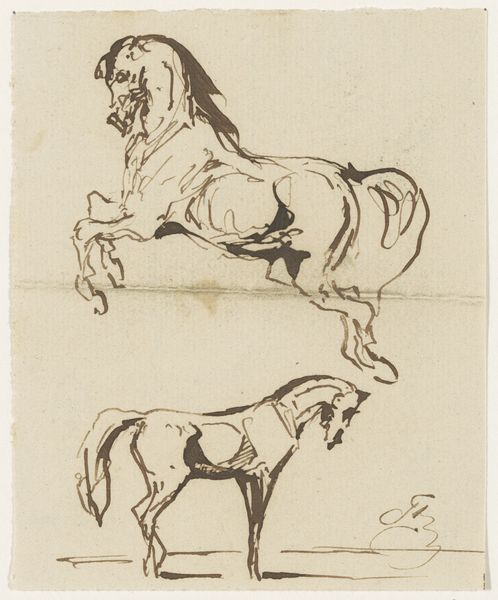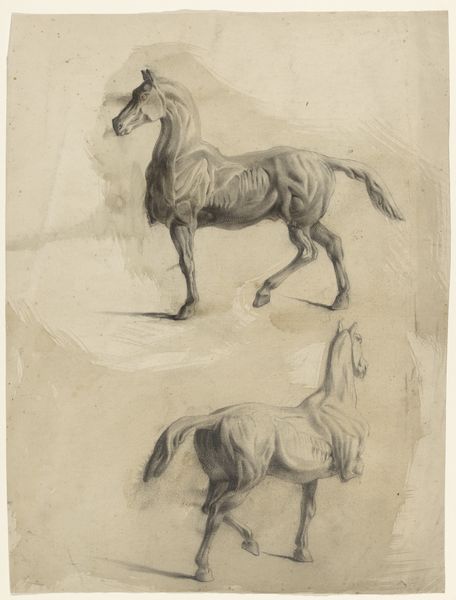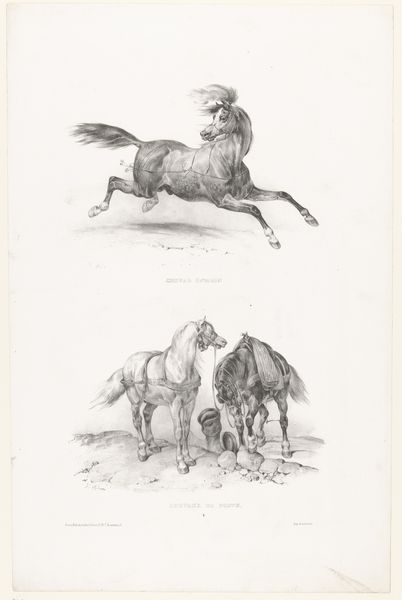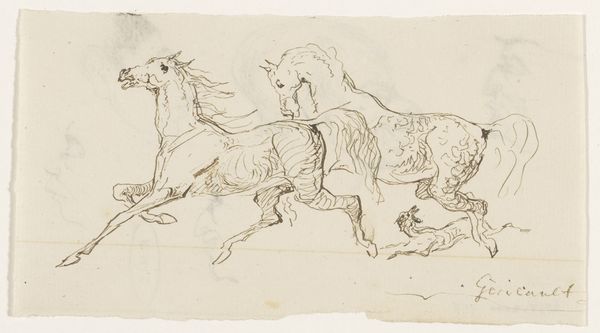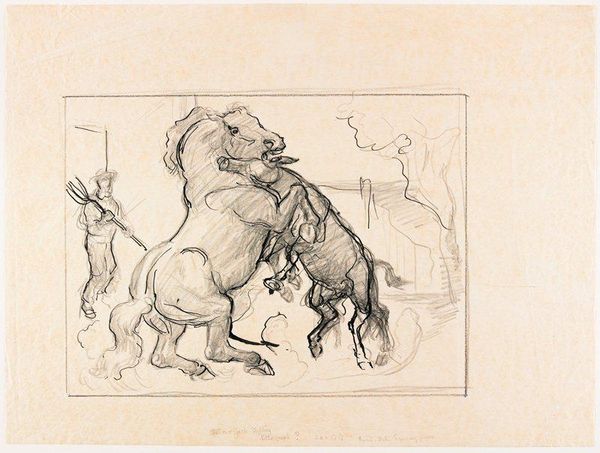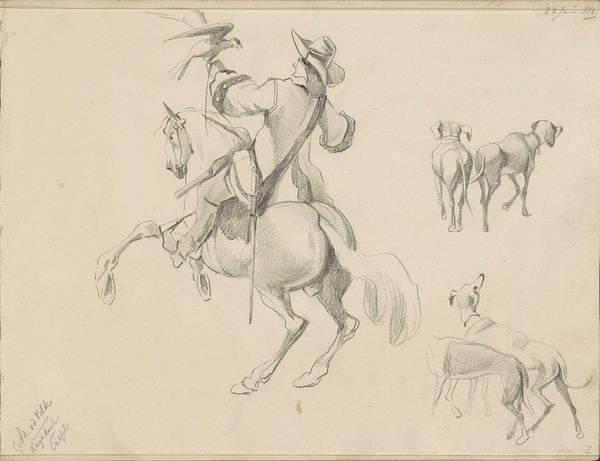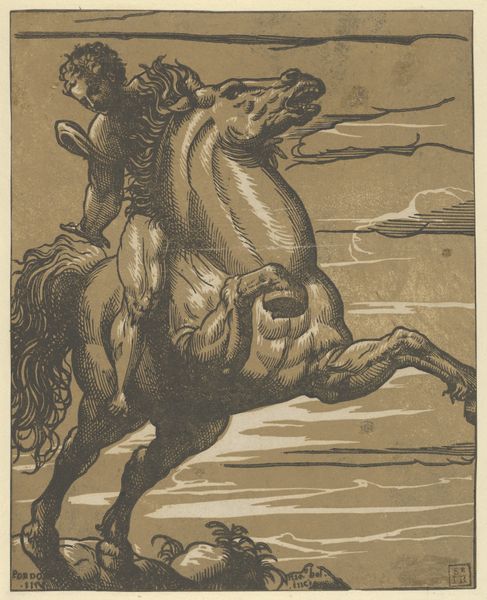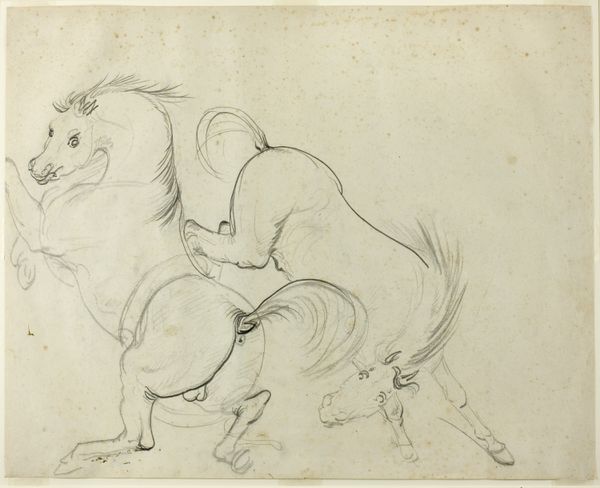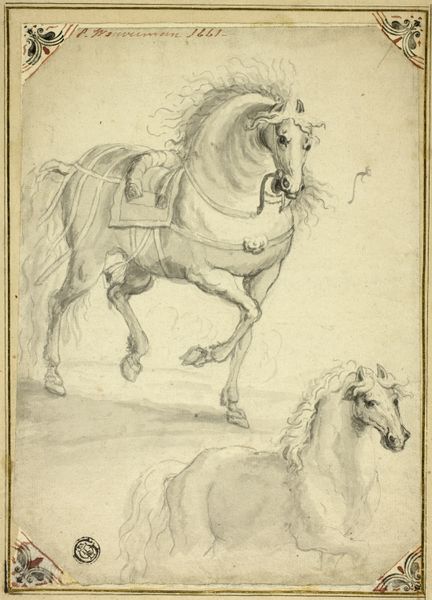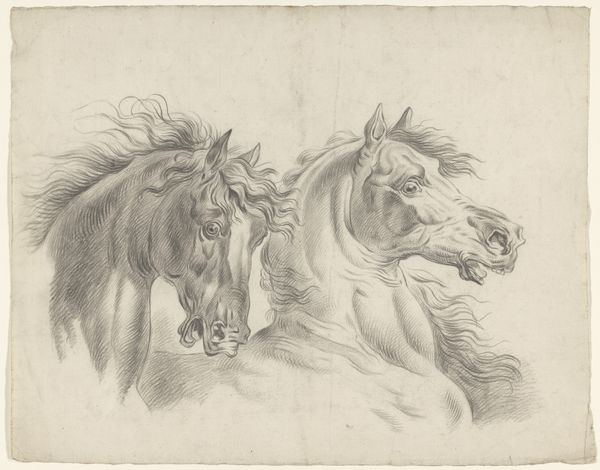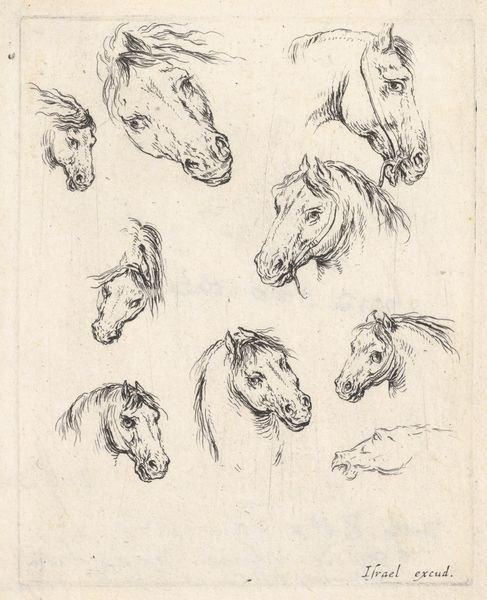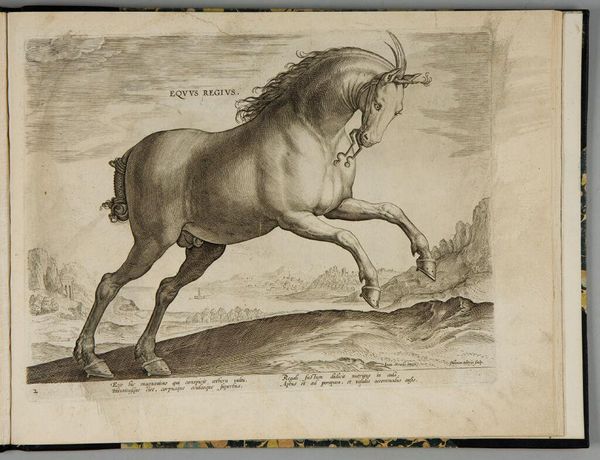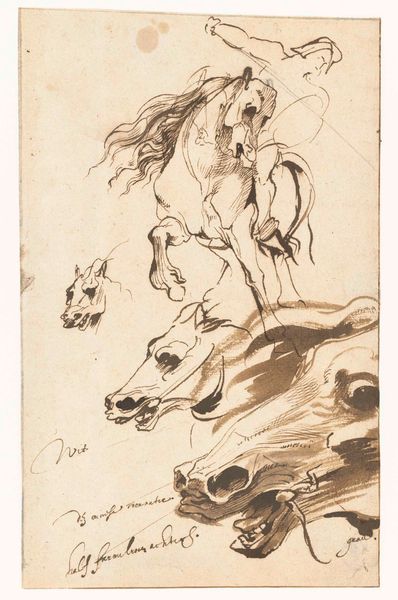
Study of Young Horsemen, pl. XV from "Recueil de caricatures" 1749 - 1759
0:00
0:00
drawing, print, etching
#
drawing
#
baroque
# print
#
etching
#
landscape
#
figuration
#
horse
#
history-painting
Dimensions: Sheet: 11 1/8 × 7 7/8 in. (28.3 × 20 cm) Plate: 10 3/4 × 7 1/2 in. (27.3 × 19 cm)
Copyright: Public Domain
Curator: Immediately I'm struck by how dynamically unsettling these figures appear! There's an urgent sense of movement—or maybe resistance—in the depiction of these riders and their horses. Editor: The print you are observing is entitled "Study of Young Horsemen, pl. XV from "Recueil de caricatures"," made by Ange-Laurent de La Live de Jully between 1749 and 1759. Executed through etching, the artist captures, well, precisely that – a study. A commentary emerges here that reveals so much more than horsemanship alone, one layered within sociopolitical tensions. Curator: Ah, a "Recueil de caricatures!" So this isn't just about equestrian skill, it’s offering some sort of social commentary then? The rider on top, draped dramatically, is posed versus the seemingly disheveled lower rider— is class at play? The upper rider carries a clear and self-possessed air versus the tension of the rider underneath him. Editor: Precisely! Think about the Baroque period in the context of societal structures, about who had access to equestrian training and the leisure that it symbolized. Now contrast the refined posture of the rider above with the lower figure struggling to control his mount. We could ask how issues of social mobility and power dynamics find expression here? Is it a critique of aristocratic affectation? A parody of ambition? Curator: I like how the stark, almost clinical style of the etching accentuates the caricature too. The bare background throws these figures into sharp relief. No romantic scenery to distract us from the characters. The horse and rider combination, the way they present together to an external world; are these individuals projecting confidence or trying to grasp power through association? How does the artist want us to interpret this? Editor: Consider how the *act* of caricature serves as a subversive act, too. These "studies" perhaps capture truths, revealing a fragility, a pretense, even if unintended, beneath a carefully constructed social performance. The elite are forced to confront less curated, more vulnerable versions of themselves, impacting both their social and personal perception. What stories are behind the social masks? Curator: The tension between performance and reality really resonates. We are drawn to interpret beyond the surface, looking at the individual experience beyond outward appearance. I appreciate how it pushes us to confront what remains concealed underneath! Editor: It is a sharp reminder to examine power not as a static entity, but rather something continuously negotiated, performed, and, sometimes, undermined through satire.
Comments
No comments
Be the first to comment and join the conversation on the ultimate creative platform.
